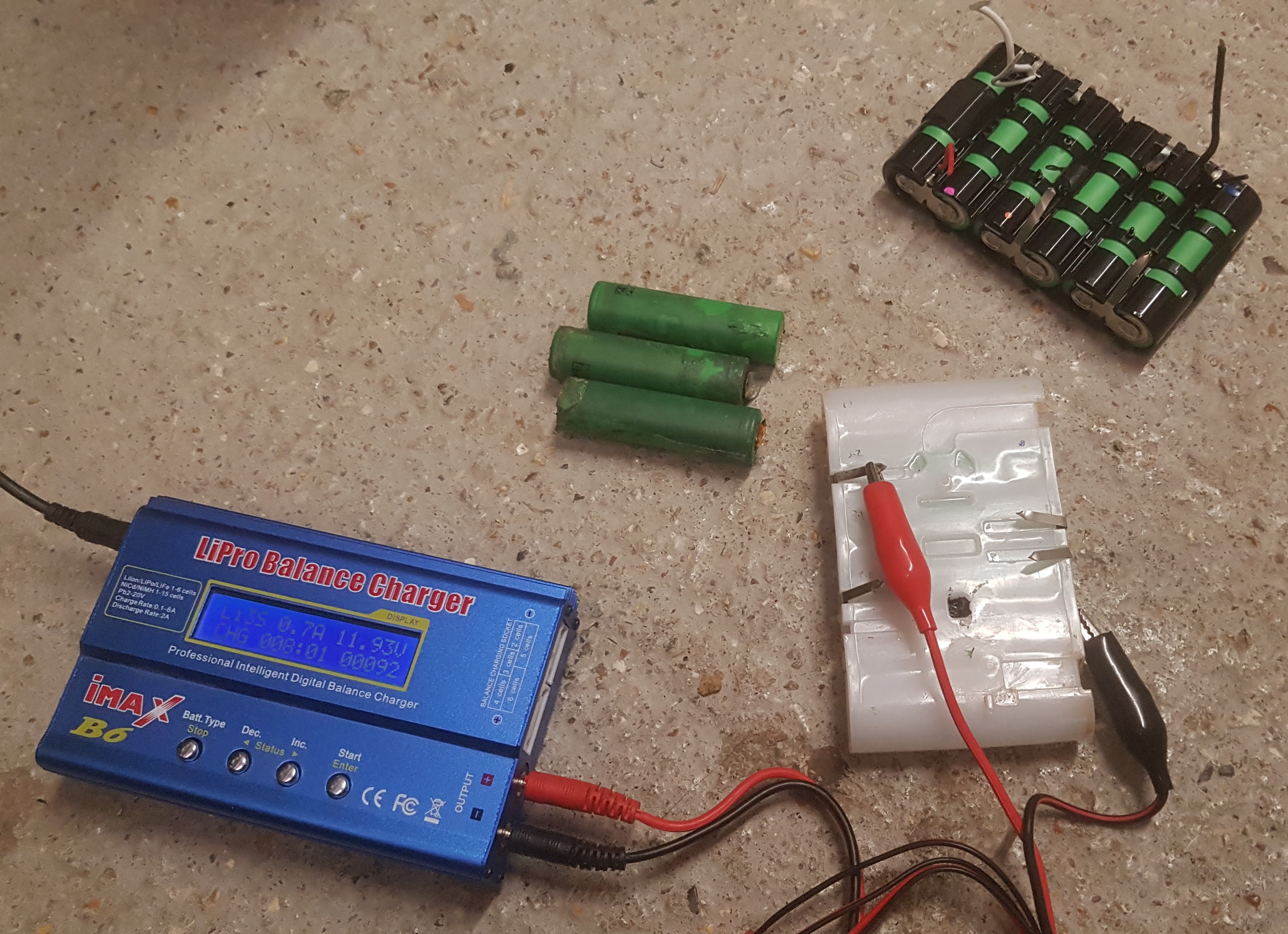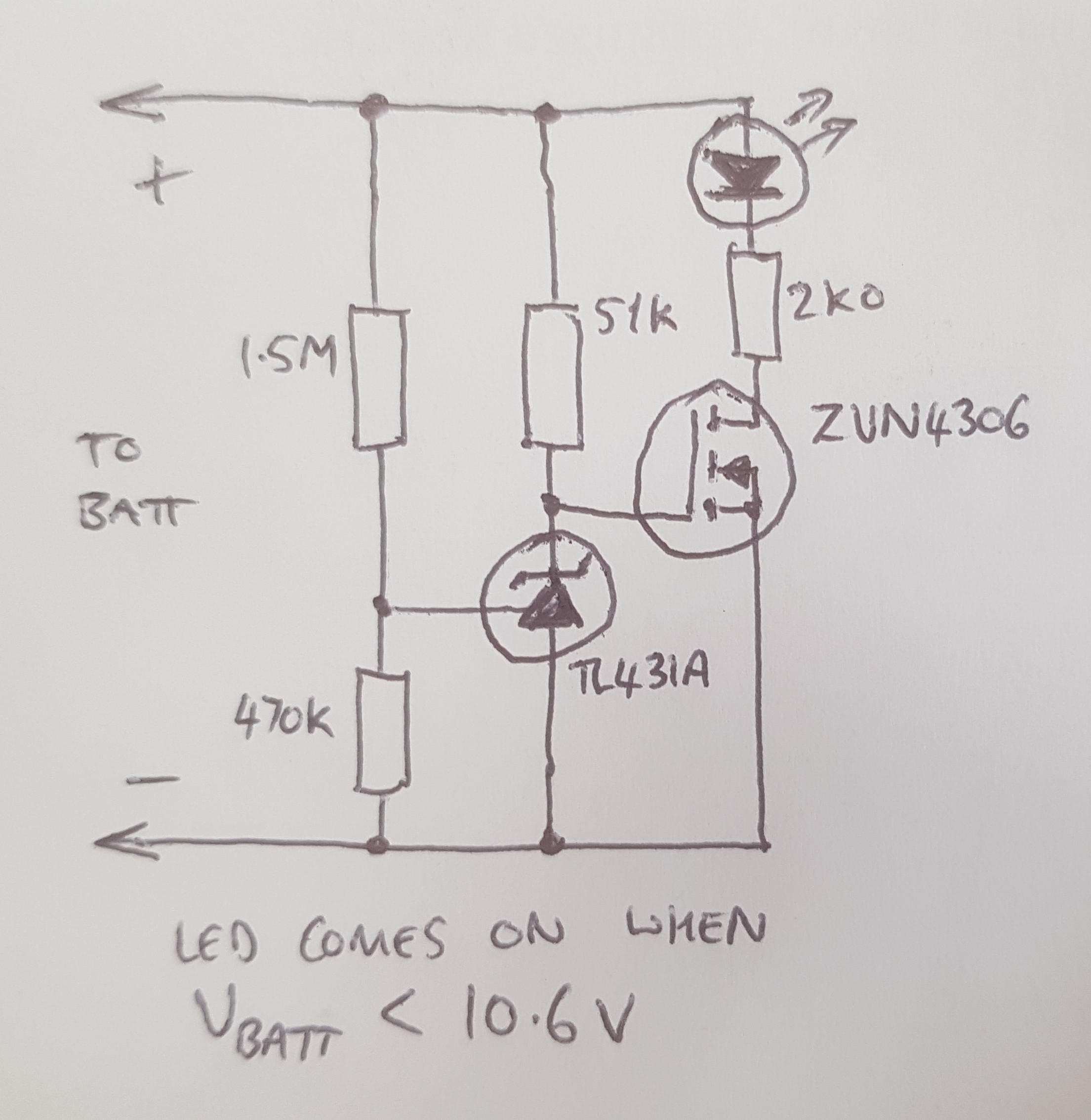17/6: Still searching for a 3S pack of 18650's that looks like it might actually have the claimed capacity, but there are so many lies on eBay...
But I have now chosen some solar panels (picked to stack side-by-side to completely fill the top panel of the box) and an MPPT charger module. I'm keen to see how long it takes to charge the battery on a sunny day...
19/6: Finally chosen a cheapo 18650 pack from eBay. It has a claimed capacity of 3800mAh (ha!) and protection circuit. We'll see what turns up.
25/6: Had the amp running all weekend indoors, at a comfortable 'background' music level, and measured the current consumption at ~50mA, i.e. 0.6W total power dissipation. If the solar cells manage the claimed 1W max each (x3), then I should get break-even charging/discharging even on a cloudy day.
11/7: Just a quick update on this. The solar panels arrived the other day, and I quickly cobbled them together with the MPPT charger module and three Li-ion cells I had kicking around. Long story short: the Voc of the panels (in series) is about 16V, so their Vmpp is about 0.8x16=12.8V. However, the module is set up for an 18V panel and its Vmpp is set (using resistors) a bit higher. I've added a trimmer pot to be able to vary the module Vmpp and tune it for maximum charging current. We'll see how well that works the next time it's sunny. For now, it's cloudy and the panels are only managing about 5-15mA. I'm not convinced they're going to be much better in the sun...
12/7: Had a bit of sun today, and thus the chance to measure Isc and peak charging current of the solar panels. Sadly, the most I managed was about 110mA into a Li-ion at 11.5V, in other words 1.3W. And that was with the charging module's Vmpp adjusted for best current. For a panel with a total area of 0.02m^2, and assuming say 1000W/m^2 solar irradiance, that's an efficiency of only 6.3%! Rubbish! Some of that will be the buck converter in the charging module, but that ought to be 70-80% I'd have thought. Back to eBay to find a better panel...
24/7: Just remeasured the solar panels in bright direct sun, without the MPPT board. Best I managed was Voc = 17.5V, Isc = 138mA. Peak power therefore likely to be around 1.5W for the string of three (they're meant to be 1W each!).
30/7: In a moment of (almost) madness I bought two used Dyson cordless vacuum cleaner batteries. Each has 6 li-ion cells in series, so the plan is to cut the packs in half, rewire them as 3S2P and add a new protection circuit. Sadly, of the 12 cells that arrived, only 3 are any good. Still, cheaper than buying new, and I've now got two plastic cages for holding the cells.

1/8: Finally had three 18650 cells, with their protection circuit, charging via the MPPT controller - all seems to be working fine! The MPPT controller module (based on the CN3722) is set to have a maximum charge current of 2.8A, which is a bit high for my rather small and sickly 3S1P pack (about 1500mAh), but will be ok when I have a bigger 3S2P pack of bigger capacity cells. For now I can use a power supply with current limit to avoid charging the pack too quickly.
2/8: Another observation: When the charging supply is <Vmpp, the charger module simply stops charging. This is a problem as I was hoping to set Vmpp to, say 14V, to get the most out of the solar panel, but still be able to charge from a vehicle cigarette lighter socket (12-13.5V ish) without any other circuitry. Now it looks like I'll need a separate boost converter to get up to 14-15V. The upside is that with a dedicated boost converter, I can also charge from 5V USB. Or anything really.
15/8: After a *lot* of agonising, I've finally decided to do away with the built-in solar panels. This is partly because I can't wait for the new ones to come in the post (I really wanna get this box built!), partly because the benefit is marginal, and partly because I'd have to leave the box out in the sun to charge it, which is just asking for it to get stolen at a festival. Instead, I'll use my smart charger most of the time, and possibly put together a small solar panel with the MPPT module and a long cable for festival use. This simplifies the electronics as it means I don't need any charging circuitry inside the box - just a protection board.
19/8: I've put together a little "low battery" indicator instead of a fuel gauge. This circuit draws only 0.22mA normally, and when the battery voltage drops below 10.6V the LED comes on adding another 4mA or so.

Discussions
Become a Hackaday.io Member
Create an account to leave a comment. Already have an account? Log In.